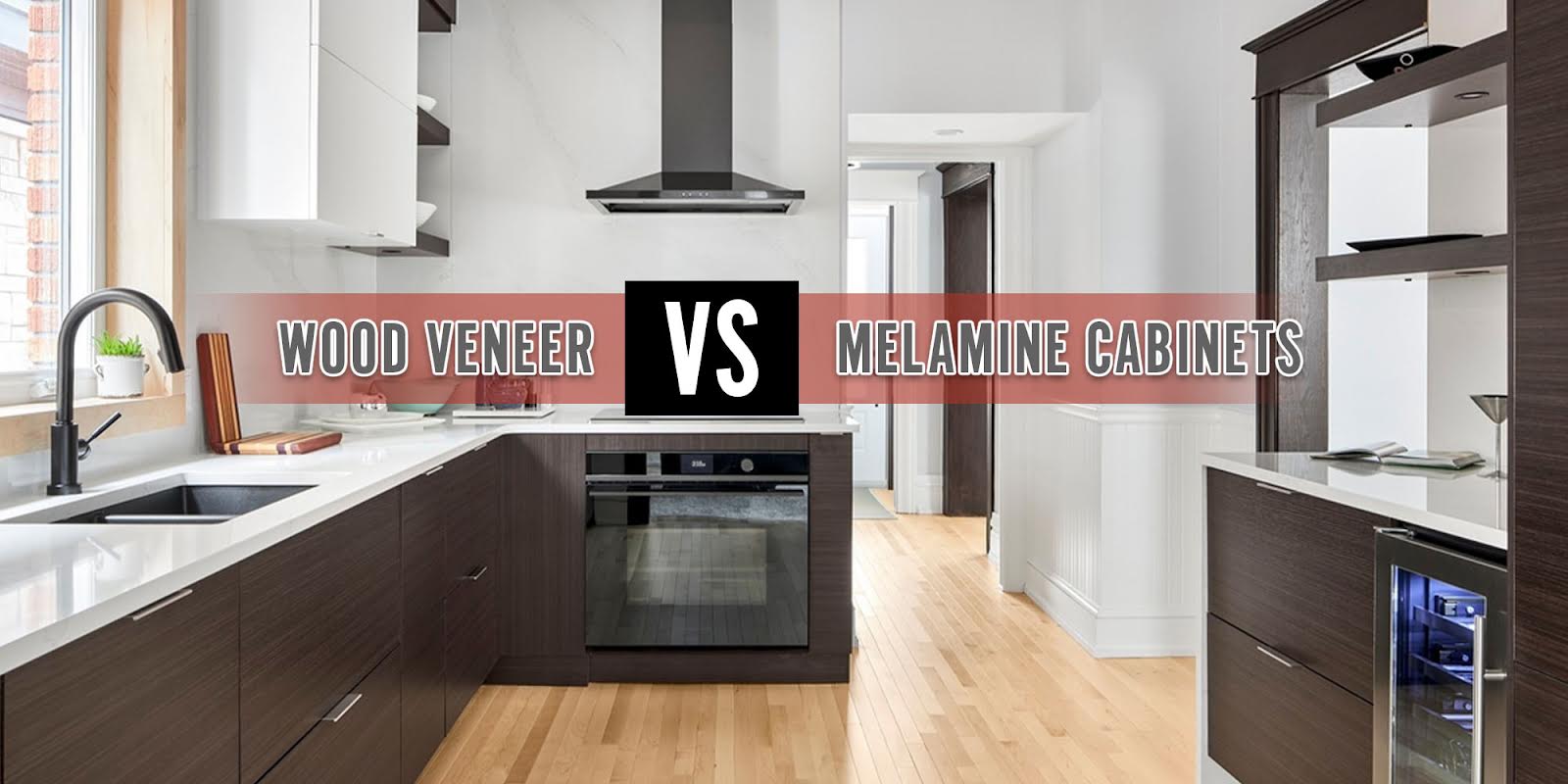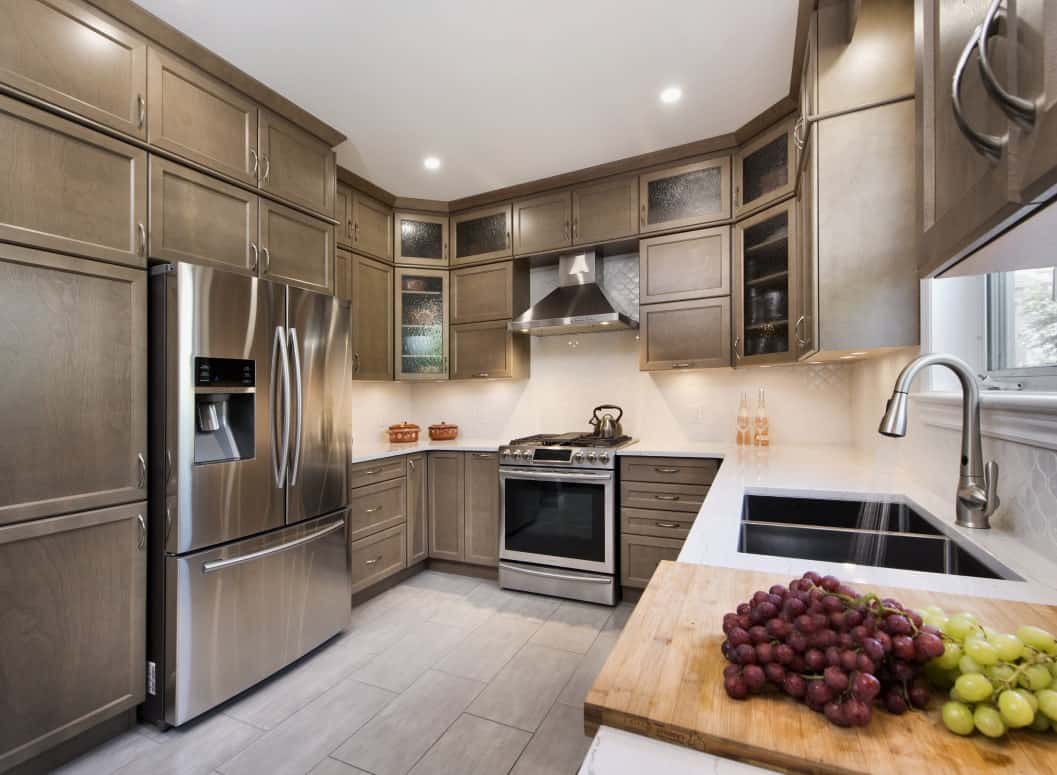Melamine vs. Wood

Choosing the right material for your kitchen cabinets is a crucial decision that impacts both functionality and aesthetics. Melamine and wood are two popular options, each with its own unique properties and characteristics. This guide explores the key differences between melamine and wood cabinets, helping you make an informed choice for your kitchen.
Material Properties and Characteristics
Melamine and wood differ significantly in their physical properties, influencing their durability, moisture resistance, and heat resistance. Melamine, a synthetic material, is known for its resilience and affordability, while wood offers a natural appeal and a wide range of finishes.
Durability
- Melamine: Melamine cabinets are highly durable and resistant to scratches, dents, and stains. This makes them an excellent choice for families with young children or active lifestyles. The surface is non-porous, preventing liquids from seeping in and causing damage.
- Wood: Wood cabinets, especially those made from hardwoods like maple or cherry, are also durable but can be more susceptible to scratches and dents. However, they can be refinished or repaired, extending their lifespan.
Moisture Resistance
- Melamine: Melamine is highly resistant to moisture, making it ideal for humid environments like kitchens and bathrooms. It does not warp or swell with exposure to water, ensuring a long-lasting finish.
- Wood: Wood is susceptible to moisture damage, particularly in high-humidity areas. While some wood species are more resistant than others, it’s essential to seal wood cabinets properly to prevent warping, swelling, and mold growth.
Heat Resistance
- Melamine: Melamine is heat-resistant, meaning it can withstand the heat from cooking appliances without warping or burning. However, prolonged exposure to extreme heat can still cause damage.
- Wood: Wood is less heat-resistant than melamine and can be susceptible to burning or scorching. It’s important to use heat pads or trivets to protect wood cabinets from direct heat sources.
Aesthetic Qualities
Melamine and wood offer distinct aesthetic qualities, catering to different design preferences and styles. Melamine’s versatility in color and finish options makes it suitable for contemporary and modern kitchens, while wood provides a classic and timeless appeal.
Color Options and Finishes
- Melamine: Melamine cabinets come in a wide array of colors and finishes, including solid colors, woodgrains, and metallics. This allows for customization and a modern look.
- Wood: Wood cabinets offer a more natural and organic aesthetic, with various wood species providing distinct grain patterns and colors. They can be stained, painted, or left unfinished, offering endless customization possibilities.
Design Versatility
- Melamine: Melamine cabinets are often available in standard sizes and configurations, making them a cost-effective option for mass production. However, they may have limited design flexibility compared to custom wood cabinets.
- Wood: Wood cabinets offer greater design versatility, allowing for custom sizes, shapes, and details. This makes them suitable for unique kitchen layouts and personalized styles.
Environmental Impact
The environmental impact of melamine and wood cabinets is a crucial consideration for eco-conscious consumers. Both materials have pros and cons, influencing their sustainability and overall impact on the environment.
Sourcing
- Melamine: Melamine is a synthetic material derived from formaldehyde and melamine resin. The production of these components requires significant energy and resources, potentially contributing to environmental pollution.
- Wood: Wood is a renewable resource, but the sourcing of wood for cabinets can have significant environmental impacts. Sustainable forestry practices are essential to minimize deforestation and habitat loss.
Manufacturing
- Melamine: The manufacturing process of melamine cabinets involves using adhesives and coatings that can release volatile organic compounds (VOCs), contributing to indoor air pollution.
- Wood: The manufacturing of wood cabinets involves cutting, shaping, and finishing processes that can generate waste and require energy consumption.
Disposal
- Melamine: Melamine cabinets are typically not recyclable and often end up in landfills, where they can take hundreds of years to decompose.
- Wood: Wood cabinets can be recycled or repurposed, reducing their environmental impact. However, proper disposal and recycling processes are crucial.
Cost and Affordability

The choice between melamine and wood cabinets often boils down to budget considerations. Melamine cabinets are generally more affordable than wood cabinets, but both offer a range of options depending on style, size, and customization. This section explores the cost factors, long-term value, and examples of budget-friendly and premium options within both melamine and wood cabinet categories.
Cost Comparison
Melamine cabinets are typically less expensive than wood cabinets, primarily due to the use of less expensive materials and simpler construction methods. The cost of melamine cabinets can vary depending on factors such as:
- Size: Larger cabinets naturally cost more.
- Style: Cabinets with more intricate designs or finishes can be more expensive.
- Customization: Adding features like soft-close drawers or custom cabinet doors can increase the cost.
Wood cabinets, on the other hand, offer a wider price range due to the diverse selection of wood types, finishes, and construction techniques.
- Wood Type: Hardwoods like cherry, maple, and walnut are generally more expensive than softwoods like pine or oak.
- Finish: Custom stains, paints, and finishes can significantly impact the overall cost.
- Construction: Hand-crafted cabinets with intricate joinery and high-quality hardware are typically more expensive.
Long-Term Value and Cost Savings
While melamine cabinets are initially less expensive, wood cabinets offer greater long-term value. Wood cabinets are more durable and can be refinished or repaired, extending their lifespan. Melamine cabinets, however, are more susceptible to scratches, dents, and moisture damage, which can lead to premature replacement.
Melamine cabinets are generally less expensive upfront, but wood cabinets offer greater long-term value due to their durability and refinishing potential.
Budget-Friendly and Premium Options
Both melamine and wood cabinets offer budget-friendly and premium options, catering to various budgets and design preferences.
Melamine Cabinets
- Budget-Friendly: Basic melamine cabinets with simple designs and standard finishes are readily available at affordable prices. These options are often found in big-box stores and online retailers.
- Premium: High-end melamine cabinets can feature sophisticated designs, high-quality laminates, and advanced construction techniques. These options may offer a more luxurious look and feel while still maintaining affordability compared to wood cabinets.
Wood Cabinets
- Budget-Friendly: Solid wood cabinets made from less expensive softwoods, such as pine or oak, can be a budget-friendly option. These cabinets may have simpler designs and finishes to keep costs down.
- Premium: High-end wood cabinets often feature exotic hardwoods, intricate designs, custom finishes, and handcrafted construction. These cabinets are typically more expensive but offer unparalleled quality, durability, and aesthetic appeal.
Maintenance and Care: Kitchen Cabinets Melamine Vs Wood

The longevity and beauty of your kitchen cabinets depend heavily on proper maintenance and care. Both melamine and wood cabinets require different cleaning and care routines to preserve their appearance and functionality. Understanding these differences will help you make informed decisions about the best material for your kitchen.
Cleaning and Maintenance Procedures
Melamine and wood cabinets require distinct cleaning procedures to maintain their integrity. Melamine cabinets are known for their durability and resistance to stains and moisture. However, they are not completely impervious to damage. Wood cabinets, on the other hand, are more susceptible to scratches, stains, and moisture damage, requiring more careful cleaning and maintenance.
- Melamine Cabinets: Melamine cabinets are generally low-maintenance. They can be cleaned with a damp cloth and mild dish soap. Avoid abrasive cleaners, as they can damage the surface. You can also use a multi-purpose cleaner, but always test it on an inconspicuous area first to ensure it doesn’t cause discoloration. Melamine is also resistant to heat and moisture, making it ideal for kitchens with high humidity levels.
- Wood Cabinets: Wood cabinets require more careful cleaning and maintenance. Avoid using harsh chemicals or abrasive cleaners, as they can damage the finish. Use a soft cloth and mild dish soap to clean the surface. You can also use a wood cleaner specifically designed for kitchen cabinets. It is important to dry the surface thoroughly after cleaning to prevent water damage.
Potential for Damage and Wear and Tear
Both melamine and wood cabinets are prone to different types of damage. Understanding these vulnerabilities will help you take preventative measures and address any issues promptly.
- Melamine Cabinets: Melamine cabinets are generally resistant to scratches and stains, but they can be damaged by excessive heat and moisture. Avoid placing hot pots or pans directly on the surface. If the surface becomes scratched, you can try to repair it with a melamine touch-up kit.
- Wood Cabinets: Wood cabinets are more susceptible to scratches, dents, and water damage. They can also be stained by spills and grease. Avoid placing hot items directly on the surface, and use coasters or trivets to protect the finish. You can also apply a sealant or finish to protect the wood from water damage and stains.
Longevity and Durability, Kitchen cabinets melamine vs wood
The longevity and durability of kitchen cabinets are crucial factors to consider when choosing between melamine and wood. While both materials can last for many years with proper care, their performance under typical kitchen conditions differs.
| Feature | Melamine Cabinets | Wood Cabinets |
|---|---|---|
| Durability | High resistance to scratches, stains, and moisture | More susceptible to scratches, dents, and water damage |
| Longevity | Can last for decades with proper care | Can last for decades with proper care, but may require refinishing over time |
| Maintenance | Low maintenance | Requires more frequent cleaning and maintenance |
| Cost | Generally more affordable | Typically more expensive |
Kitchen cabinets melamine vs wood – While melamine kitchen cabinets are known for their durability and resistance to scratches, wood cabinets, despite their elegance, can be susceptible to minor blemishes. If you find yourself with scratches on your wood cabinets, fret not! There are numerous methods to restore their beauty, such as using wood filler, sanding, or applying a touch-up paint.
Learn more about how to cover scratches on wood cabinets to make them look good as new. Ultimately, the choice between melamine and wood cabinets comes down to your individual preferences and priorities.
Choosing between melamine and wood for your kitchen cabinets is a big decision, just like deciding on the right rug for your wood floor bedroom. While melamine offers affordability and durability, wood provides a natural elegance and warmth. Just like a rug on wood floor bedroom can add comfort and style, wood cabinets can transform your kitchen into a haven of sophistication.
Ultimately, the best choice depends on your budget, aesthetic preferences, and the overall feel you want to achieve in your home.
